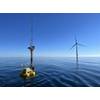Professor Wins $200,000 Offshore Suction Pile Contract
South Dakota School of Mines & Technology apprises that professor Sangchul Bang is making history by designing suction pile foundations for what will be the world's largest windmill on a 2,500-megawatt (MW) wind farm in the Yellow Sea off the shores of South Korea.
His nearly $200,000 contract with Korea Electric Power Corporation Research Institute (KEPRI) will result in foundations for 500 windmills ranging from 3 MW to 7 MW each – the largest ever constructed.
Until 2001, Bang, Ph.D., professor in the Department of Civil & Environmental Engineering, consulted for the U.S. Office of Naval Research, which awarded him a $500,000 grant for the design of mooring systems for floating naval bases approximately one mile long – five times the length of the largest aircraft carrier. Suction pile foundations were the result of that research.
The professor has been offered numerous Navy research and consulting contracts since then, most recently to supervise the design and installation of the foundations of two meteorological towers installed in preparation for this 2,500-MW wind farm west of South Korea in the Yellow Sea.
Prior to the design of offshore wind farms, towers such as these are installed to monitor the meteorological data at the planned site, accruing measurements of atmospheric air pressures, wind velocities and directions, tidal wave conditions and ocean current velocities and directions at various elevations. The data is then used to locate wind turbine orientations and elevations.
Housed underneath the towers, embedded in the seafloor, suction pile foundations are large-diameter and hollow, a structure Bang likens to an upside-down cup. Installed with a pump, they suck water out from the top and support the windmill above against external loads such as self-weight, wind, ocean currents, earthquakes, collisions and the like.
The current project presents a unique challenge as each type of windmill – 3 MW, 5 MW, 5.5 MW and 7 MW – will have a different configuration with varying lengths and number of blades as well as variant soil conditions, such as clay layers or sand, from one site to another. Thus, the foundation of each windmill must be designed individually.
With plans for the first windmill to be installed and operational by late 2015, Bang is currently training an engineer from KEPRI at the SD Mines campus on how to design, analyze and install suction piles in offshore environments. Another engineer plans to arrive in 2015, and Bang will be closely involved as the offshore wind farm progresses.
http://www.sdsmt.edu
















 February 2024
February 2024



